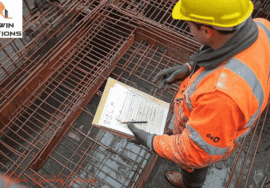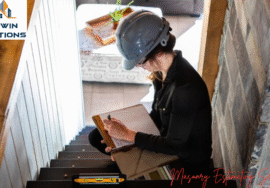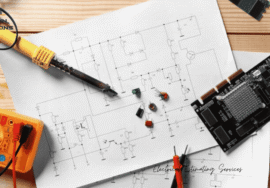What Is Drywall Made Of?
What is Drywall?
Drywall is an integral part of modern construction, used in homes, offices, and commercial buildings to create smooth walls and ceilings. While it may seem like a simple material, drywall is an interesting structure that combines stability, fire resistance, and ease of installation. In this article, we will discover what drywall is made of, it’s manufacturing process, different types available, and why it is such a popular choice in construction?
The basic structure of Drywall:
Drywall, also known as Gypsum board or plasterboard, consists of three basic components:
- Gypsum core – The main material in drywall is Gypsum, a soft sulfate mineral containing calcium sulfate dehydrate (CaSO₄•2H₂O). This mineral is naturally located and is widely used in construction due to its fire-resistant properties.
- Paper Facing – Gypsum cover is sandwiched between heavy duty paper layers. This provides drywall structural stability. Front-facing paper is designed to be smooth for painting or finishing, while the back offers paper support.
- Additives and strength – Depending on the type of drywall, manufacturers can add elements such as Fiberglass, foam agents, and water-resistant compounds to increase efficiency. The combination of these materials drywall is a versatile and efficient solution for interior walls and ceilings.
How Drywall is manufactured
Drywall’s manufacturing process involves several steps to ensure it meets quality and safety standards:
- Mining Gypsum – Gypsum is extracted from natural deposits in mining or artificially produced from industrial products.
- Processing gypsum – Raw Gypsum is crushed, dried, and ground into fine powder.
- Mixing with additives – Gypsum powder is mixed with water and other ingredients, such as starch, foam agents, and fiberglass, to improve strength and performance.
- Panel Forming – The wet Gypsum mixture is spread on a continuous sheet of paper, then covered with another sheet to form the sandwich structure.
- Drying and hard – The boards are cut in size and sent through a drying oven to remove excess moisture and strengthen the texture.
- Finish and packaging – once dry, the boards are tested for quality, and packed for distribution. This process is lightweight yet produce strong drywall panels that are easy to install and finish.
Types of Drywall and Their Composition
There are different types of drywall, each designed for specific applications. While all drywall is made of Gypsum, the variations in additives and paper types determine their performance characteristics.

- Structure: Gypsum with fiberglass and other additives to slow the spread of primary fire.
- Best used: Sectors require fire resistance, such as garages, staircases, and multi-family housing.
- Example: Type X drywall provides a fire rating of up to an hour, making it ideal for safety fire construction.
Moisture resistant Drywall (green board)
- Structure: Gypsum treated with basic water resistant additives and covered with moisture resistant paper.
- Used for the best: Bathrooms, kitchens, and layers where moisture is high.
- Example: Green board is often used as a base for tile installation in wet areas.
Mold resistant Drywall (product board)
- Structure: Gypsum affected with basic mold resistant additives and non-paper facing.
- Best used: Hunting for area development, such as development of laundry rooms and layers to mold.
- Example: Purple board moisture is an excellent choice for homes in the climate.
Soundproof Drywall
- Composition: Multiple layers of Gypsum with viscoelastic polymers and fiberglass-like sound sample materials.
- Used for the best: media rooms, offices, and apartments where noise reduction is required.
- Example: Soundproof drywall, such as Quiet Rock, can significantly reduce sound transmission between rooms.
Lightweight Drywall
- Structure: A specially formulated gypsum base that reduces weight without strength.
- Best used: Large installations where easy handling is preferred.
- Example: Ideal for DIY projects, it’s easy to lift and install.
Why Drywall has become the standard material for interior walls:
- Affordable – Drywall is cost-effective compared to plaster and other wall materials.
- Easy installation – It is lightweight and can be cut, nailed, and easily patched.
- Fire resistance – Gypsum mainly fights the flames naturally, increasing safety.
- Versatility – It is available in different types to suit different needs, from moisture resistance to soundproofing.
- Sustainability – Many manufacturers use recycled materials in drywall production, making it an environmentally friendly option.
Recommendations
For choosing the right drywall when choosing a drywall for a project, considering the following factors:
- Room function: Use moisture-resistant drywall in the bathroom and fire-resistant drywall in the garage.
- Environmental conditions: Opt for mold-resistant or moisture-resistant drywall in high humidity areas.
- Budget: Standard drywall is the cheapest, but investing in special drywall can improve longevity and efficiency.
Conclusion
Drywall is an essential material in modern construction, mainly faced with a gypsum cover and paper. Its structure varies based on the desired application, offering fire resistance, moisture protection, and soundproofing. To understand that drywall allows homeowners and contractors to choose the right type for their needs, ensuring stability and performance in each project. Whether home renovation or new building construction, drywall remains the choice to go to make smooth, strong, and reliable walls and ceilings.











